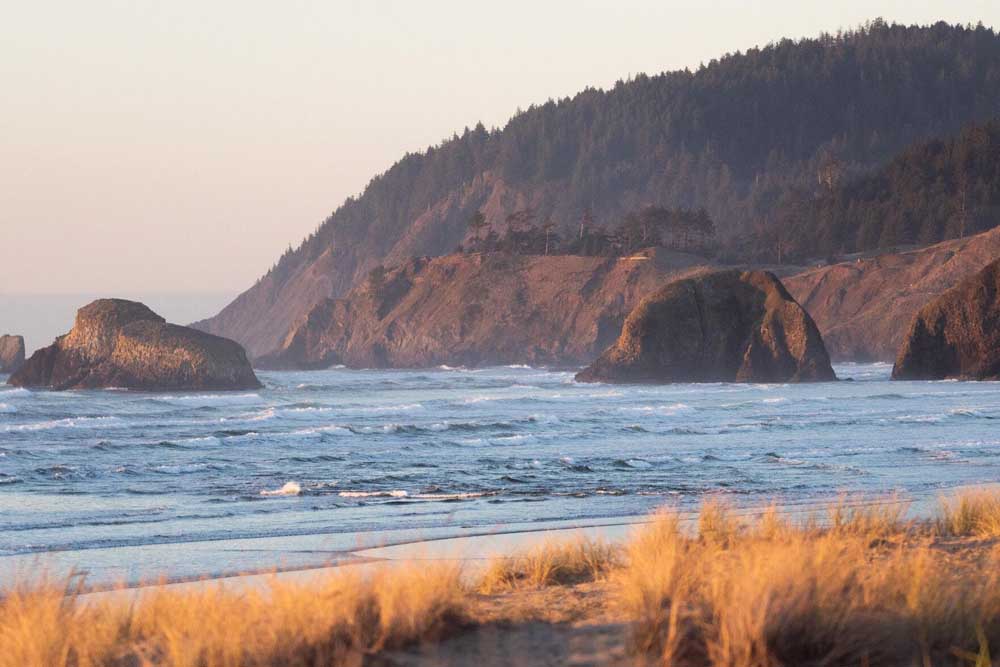Rocky shores near Cannon Beach closer to state protections
Published 1:45 pm Friday, December 23, 2022

- Ecola Point could get state protections.
Conservation advocates on the North Coast are one step closer to securing state protections for two rocky shore areas.
In December, Ecola Point and Chapman Point were two of six sites recommended special protection designations by the Oregon Ocean Policy Advisory Council, the state’s main advisory group for ocean policy issues.
The designations would bolster protections and public education about the ecology at the sites, similar to the measures taken at Haystack Rock.
As the state has updated its management strategy for rocky shores under the Oregon Territorial Sea Plan, it invited communities to form proposals for new protection designations.
The North Coast Rocky Habitat Coalition submitted proposals for Ecola Point and Chapman Point, which have been reviewed and considered over the past two years.
Chapman Point, at the far north end of Cannon Beach, is adjacent to and an entry point to Ecola Point in Ecola State Park. Together the designations would cover over 4 miles of shoreline and about 184 acres.
The recommendations are expected to go before the Land Conservation and Development Commission for review and final approval in April.
If approved, six rocky shore areas would be added to the two approved earlier this year.
Andy Lanier, the marine affairs coordinator with the state Department of Land Conservation and Development, said that would mean eight out of the original 12 proposals would be approved.
“That’s, I think, a pretty good success rate,” he said. “Two years of engagement with these communities is very important, especially because these are the environments that will face and be the harbingers of climate change on our coast.”
The Oregon Ocean Policy Advisory Council recommended designating Chapman Point as a marine education area and Ecola Point as a marine conservation area.
While the designations are different, they would be similar in practice.
As a marine education area, Chapman Point would have increased monitoring, as well as roving volunteers on the beach sharing information about sensitive species such as the black oystercatchers and sunflower sea stars.
Volunteers would also provide etiquette tips to people walking to Ecola Point during low tide to minimize wildlife disturbance.
Harvesting marine plants and invertebrates recreationally would be off-limits at both points except for a single mussel for bait in the intertidal zone. There are no new fishing rules beyond the regulations set by the Oregon Department of Fish and Wildlife.
Chapman Point is home to at least two dozen important bird colonies, numerous black oystercatcher nests and is rich in rocky intertidal diversity, marine invertebrates and plants, according to the proposal. It is also a resting place for harbor seals.
Ecola Point has extensive tide pools with healthy mussel beds and a rebounding population of sea stars. It is also a crucial haul-out site for seals and sea lions, and a home for nesting shorebirds and seabirds.
“Ecola Point is pristine,” said Jesse Jones, the CoastWatch program manager for the Oregon Shores Conservation Coalition. “It is just a pristine rocky habitat intertidal area. And visitation is high.”
She said the sites were proposed because of their significant value to wildlife.
“Conversation education will help protect the long-term health of these places,” Jones said.
The Oregon Shores Conservation Coalition was one of the groups that supported the North Coast Rocky Habitat Coalition on the proposal. Others included the Portland Audubon, Cannon Beach, the city-funded Haystack Rock Awareness Program, Friends of Haystack Rock and the North Coast Land Conservancy.
Jones, who lives in Astoria and has been coordinating the process, said the final proposal that was recommended by the Ocean Policy Advisory Council was ultimately the result of compromise and negotiation with various parties over the past two years.
Instead of taking a more regulatory approach, the proposal was adapted to take a more educational approach since the public tends to respond better to that, Jones said.
For example, there have been disturbances to black oystercatchers by off-leash dogs. Instead of rules banning off-leash dogs, as was originally proposed, Jones said volunteers will educate beachgoers on why leashing dogs protects wildlife.
Nadia Gardner, the chairwoman of the Cape Falcon Marine Reserve Advisory Committee under the North Coast Land Conservancy, called the Ocean Policy Advisory Council’s recommendations a major milestone.
She said conservation on the North Coast has largely been up to the Oregon Department of Forestry and private efforts.
“The new rocky habitat designations join an amazing conservation portfolio on Oregon’s North Coast, including Oregon Islands National Wildlife Refuge, Haystack Rock Marine Garden, and Cape Falcon Marine Reserve in our ocean, and on land Oregon State Parks, Cannon Beach’s Ecola Creek Forest Reserve, Arch Cape Water District’s new community forest, and NCLC’s Rainforest Reserve,” Gardner said.
“Together they will help ensure the health and resilience of our coastal natural areas and wildlife. These places are especially important as we face climate change impacts.”




